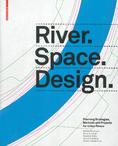special news urbanism globalization rigenerazione urbana urban africa ifau2018 summer schools call for articles sustainability events premio letteratura urbanistica premi tesi di dottorato public spaces digitalization commerce sprawl revelation infrastructures dottorati ecological networks knowledge urbanization participation safety & security outskirts & suburbs
Urban Green Belts in the Twenty-first Century
Marco Amati
Maintaining and enhancing living conditions in cities through a combination physical planning and environmental management is a newly emerging focus of governments around the world. For example, local governments seek to insulate sensitive land uses such as residential areas from environmentally intrusive activities such as major transport facilities and manufacturing. Regional governments protect water quality and natural habitat by enforcing pollution controls and regulating the location of growth. Some national governments fund acquisition of strategically important sites, facilitate the renewal of brown fields, and even develop integrated environmental quality plans.
Planners internationally have employed green belts to contain the explosive sprawl of cities as varied as Tokyo, Vienna and Melbourne during the twentieth century. As yet, no collection has gathered these experiences together to consider their contribution to planning.
Juxtaposing examples of green belt implementation worldwide, this book adds to understanding of how green belts can be effected in theory and how practitioners have adapted them in practice. The book provides a typology of green belt implementation and reform, enabling planners to grasp why these policies are employed and whether they are relevant to twenty-first century planning.
"It is astonishing to realize that no book has attempted to compare international efforts to construct green belts around cities, despite the fact that this idea has been a powerful element of urban planning for the past 100 years. Marco Amati and his collaborators fill this gap with a wide ranging and important book that will be essential to students and to scholars, planners, and designers working on the emerging megacities of the world".
Michael B. Teitz, University of California, Berkeley, USA
CONTENTS
Figures
Tables
Notes on contributors
Preface
Acknowledgements
1. Green Belts: A Twentieth-century Planning Experiment
Marco Amati
Part I: The Coalition of the Un-willing: Landowners and the Green Belt
2. The Abandonment of Tokyo’s Green Belt and the Search for a New Discourse of Preservation in Tokyo’s Suburbs
Takashi Watanabe, Marco Amati, Kenya Endo and Makoto Yokohari
3. Issues with Green Belt Reform in the Seoul Metropolitan Area
Jekook Kim and Tae-Kyung Kim
Part II: Falling Out of Favour: Deregulation and Green Belts
4. Protecting Melbourne’s Green Wedges – Fate of a Public Policy
Michael Buxton and Robin Goodman
5. The Green Belt that Wasn’t: The Case of New Zealand from 1910 to the 1990s
Caroline Miller and Marco Amati
Part III: Re-forming Greenery: From Green Belts to Green Nets
6. The Adelaide Parklands and the Endurance of the Green Belt Idea in South Australia
Christine Garnaut
7. Ottawa’s Greenbelt Evolves from Urban Separator to Key Ecological Planning Component
David Gordon and Richard Scott
8. Instruments to Preserve Open Space and Resource Lands in the Seattle, Washington Metropolitan Region – A US Alternative to Green Belts
Alon Bassok
Part IV: Works in Progress: Patching Together a Flexible Green Belt
9. The Vienna Green Belt: From Localised Protection to a Regional Concept
Meinhard Breiling and Gisa Ruland
10. From Green Belts to Regional Parks: History and Challenges of Suburban Landscape Planning in Berlin
Manfred Kühn & Ludger Gailing
11. Controlling Urban Expansion in Italy with Green Belts
Giulio Senes, Alessandro Toccolini, Paolo Stefano Ferrario, Raffaele Lafortezza and Pasquale Dal Sasso
12. The Paris-Ile-de-France Ceinture Verte
Nicolas Laruelle and Corinne Legenne
Index
Foreword
Notes on writing style
Acknowledgements
ABOUT THE AUTHOR:
Marco Amati is Director of the planning programme in the Graduate School of the Environment, Macquarie University, Sydney, Australia. His research interest are on green belts, urban growth and Japanese, Australian and UK planning system.
Related articles:
Online resources and links




Planum
The Journal of Urbanism
ISSN 1723-0993
owned by
Istituto Nazionale di Urbanistica
published by
Planum Association
ISSN 1723-0993 | Registered at Court of Rome 4/12/2001, num. 514/2001
Web site realized by ChannelWeb & Planum Association | Powered by BEdita 3


